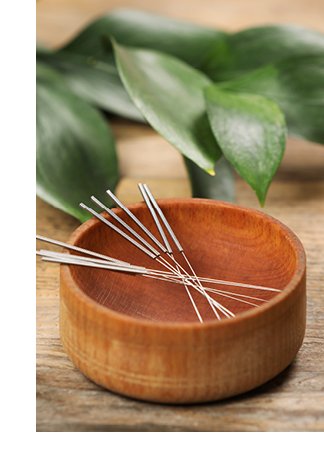The 10K Mathematics of Expertise For
Gaining Intangibles Like Personal Satisfaction And Respect
Greetings *|FNAME|*,
 In last month's newsletter, I referenced an old belief I held about how being an instructional designer and business owner should mean I could pick up marketing quickly. But after I ran the math, I realized I have only spent about 320 hours doing it during the past year (the most I've done in my entire career), and probably about 700 hours overall. This misaligned perception reminded me a lot about the popular notion of expertise. The late Dr. Anders Ericsson, of Florida State University's Psychology Department, was a renowned scholar on expertise whose research, analysis and writing helped establish the popular notion that you must engage in deliberate practice on a skill set for a minimum of 10,000 hours to gain mastery. You may have heard about that idea before, somewhere in school, work or continuing education
In last month's newsletter, I referenced an old belief I held about how being an instructional designer and business owner should mean I could pick up marketing quickly. But after I ran the math, I realized I have only spent about 320 hours doing it during the past year (the most I've done in my entire career), and probably about 700 hours overall. This misaligned perception reminded me a lot about the popular notion of expertise. The late Dr. Anders Ericsson, of Florida State University's Psychology Department, was a renowned scholar on expertise whose research, analysis and writing helped establish the popular notion that you must engage in deliberate practice on a skill set for a minimum of 10,000 hours to gain mastery. You may have heard about that idea before, somewhere in school, work or continuing education
Pivoting now from the marketing field to my primary one. I certainly put a lot of time into earning my MS and Ph.D., but I didn't track actual hours. It was probably at least a couple thousand over those years. Then I worked directly in the instructional design field after graduation, refining my craft over the past 22 years. Within that period, I've owned Change by Design for 15 years.
Now some weeks I didn't work. And some days I worked 16+ hours (or even through the night). There have been some days when I didn't ONLY work on instructional design projects. But conservatively, I would say that without fail, for 8 hours per day, 5 days per week, 48 weeks per year, over the 15 past years, I have directly put instructional design theory into practical application for clients. So based on that math, and adding in my academic training, I have over 30,000 hours of instructional design under my belt.
An Expert At Home
 I've also married into expertise. Before retiring, my husband Paul was Professor of Low Brass at FSU for 38 years. He started out as an international tuba performer, practicing 4 hours per day (between teaching students), playing in numerous ensemble and various symphonies, eventually ranking as one of the top six tubists in the world. But his raw musical talent lead him to teaching.
I've also married into expertise. Before retiring, my husband Paul was Professor of Low Brass at FSU for 38 years. He started out as an international tuba performer, practicing 4 hours per day (between teaching students), playing in numerous ensemble and various symphonies, eventually ranking as one of the top six tubists in the world. But his raw musical talent lead him to teaching.
That is when he became an expert educator. He built this teaching expertise by helping his low brass students improve, and worked beyond when called upon, from tuba to trumpet, trombone to horn in F, and everything in-between. He did this for many years and still does it part-time, in his retirement.
The 10K equation has made Paul an expert in teaching others brass performance more than 4 times over (5 students/day x 5 days/week x 38 years = 45,600 hours). And the craftsmanship shows, because Paul can help just about anyone playing these instruments sound remarkably better in a short period of time. Paul had strong talent when he started out with tuba performance, and now has even stronger expertise in teaching brass.
An Expert In Healthcare
 I try to spend as much of my time as possible around people who are experts at what they do, at work, at home, and beyond. Why work with mediocre when I expect a certain result? Take my acupuncturist, Dr. Craig Thomas, for example. He currently practices at the Tallahassee Chinese Medicine Clinic and has 18 years of experience at his craft. Although he's worked in the field for almost 2 decades, he believes in continuous improvement and routinely attends conferences to expand his knowledge beyond his office walls.
I try to spend as much of my time as possible around people who are experts at what they do, at work, at home, and beyond. Why work with mediocre when I expect a certain result? Take my acupuncturist, Dr. Craig Thomas, for example. He currently practices at the Tallahassee Chinese Medicine Clinic and has 18 years of experience at his craft. Although he's worked in the field for almost 2 decades, he believes in continuous improvement and routinely attends conferences to expand his knowledge beyond his office walls.
The results he delivers have been nothing short of astonishing. I can speak from first-hand experience. He's helped increase my daily stamina, eliminated pain, and lessoned the neuropathy I've experienced after getting off the immunotherapy drug Keytruda. It's magical!
Now let's assume that he practices acupuncture six hours a day, five days a week, for 48 weeks in a year. After all, he must go on vacation sometimes, right? Through 18 years of this regimen, I estimate Dr. Craig has been practicing his craft for about 25,920 hours. So he and I have close to the same amount of expertise in our respective skill sets.
Expertise Doesn't Equal Aptitude
But why is expertise important anyway? After all, you can make a living doing just about anything, so long as someone is willing to pay for it. So ask yourself these questions that relate to success:
- Quality - Is the basis of your professional satisfaction built solely on revenue volume?
- Growth - Has your reputation improved due to outside input, or just your own efforts?
- Prestige - Are you respected by people who you admire in your field? And outside of it?
- Diligence - How easy was it to become as good as you are at what you do?
When I talked to Paul about this, he shared that not everyone has the aptitude to be a tuba or euphonium player specializing in performance. In his view, and the view of others, practice will only take you so far. Aptitude has to be there in order to achieve high expertise. For example, Dr. Craig loves what he does, and his aptitude takes him over the line into mastery. He's stayed with it over time and has focused on being his best self. In my own business, I love helping others and effect meaningful, lasting change. And I've learned which instructional design responsibilities are best kept in my wheelhouse, and which ones I can hand off to trusted Change by Design colleagues. That way I can develop and implement new skills, in terms of business strategy, marketing and sales, all while running a growing organization that makes a difference.
Even if you do work you love, in an industry you love, it isn't always going to be puppies and peaches. It's hard, with lots of blood, sweat and tears. But it's from that perseverance, coupled with the aptitude, where you will gain growing expertise. Plus you will receive a great deal of satisfaction, respect, and success. That is a lifelong mathematical equation we can all appreciate.
Yours truly,


Sue
Email | LinkedIn | V-Card